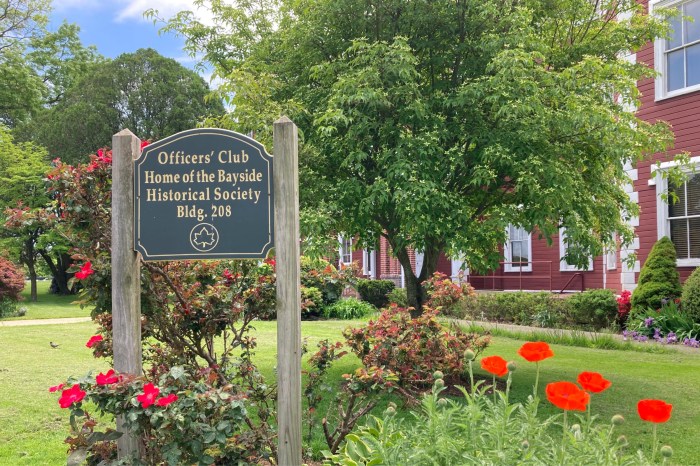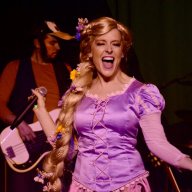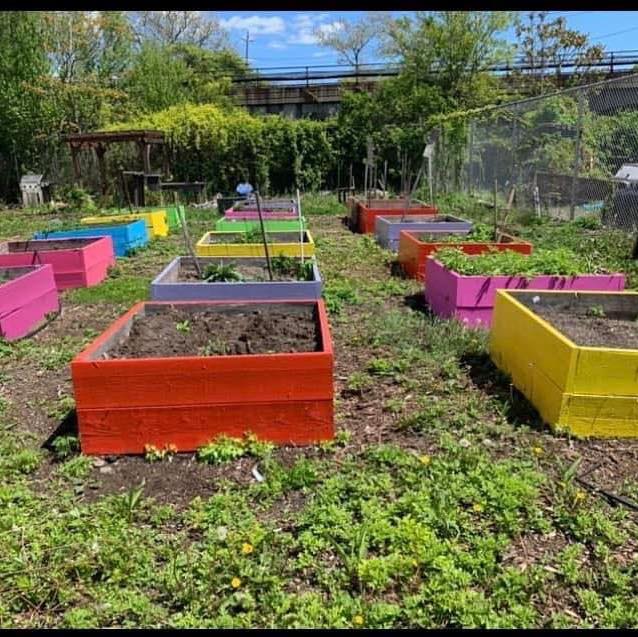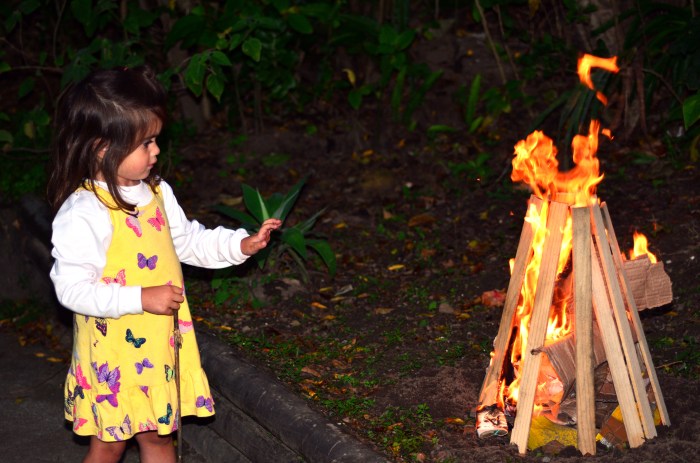‘Open Studios’ Brings Together Art, History Locals: What It Means To Grow Up In Bushwick
The seventh annual Bushwick Open Studios, held the weekend of May 31-June 2, was the largest in the festival’s history. In the second half of the Times Newsweekly’s coverage of the festival, the spotlight is on two events that focused on Bushwick’s history and the voices of artists that grew up in the area.

In an event that has ballooned over the years into a 500-site leviathan of artistry stretching as far as Graham and Metropolitan avenues (in East Williamsburg), it’s easy to lose sight of the festival’s true focus: Bushwick.
Members of the old guard- the Bushwick natives-transcended the glitz and jargon-spouting avante-garde to tell tales of the neighborhood they’ve known all their lives and how it’s changed for the good and the bad.
The stories weren’t laced with a lexicon picked up in art school. They were told by artists who still had grit in their cheeks from growing up in a “bombed-out neighborhood”-by storytellers with synapses still tapped into the light poles that powered their radios during block parties in the ’80s.

The Living Gallery, located at 1094 Broadway held two events that showcased the neighborhood’s history as told through the people that have lived and worked in the area for decades.
Before the flood
Before the flood of artists, young outsiders and gut-renovating property owners began coming to Bushwick in the new millenium, there was a thriving art community whose story was less publicized in the mainstream media.

Nonetheless, residents and people who worked in the neighborhood throughout the “blighted” decades between the 1970s and the 1990s were documenting beauty amid decay.
On June 1, Photographer Meryl Meisler and writer Vanessa Mártir presented “Defying Devastation: Bushwick Then and Now” a retrospective that combined Meisler’s photos of the neighborhood during both the 1980s and today with poetry and monologues by writers who grew up in Bushwick and Brooklyn during some of the borough’s roughest times.
Meisler taught in Bushwick in the 1980s and took photos on her way to and from the subway. When Mártir serendipitously saw a seven-year-old version of herself in one of Meisler’s photos at an exhibition, she knew they had to meet and collaborate, she said. In preparing for Defying Devastation, Mártir reached out to several Brooklyn-based writers, many of whom grew up in Bush- wick, to share remembrances of the neighborhood’s past.
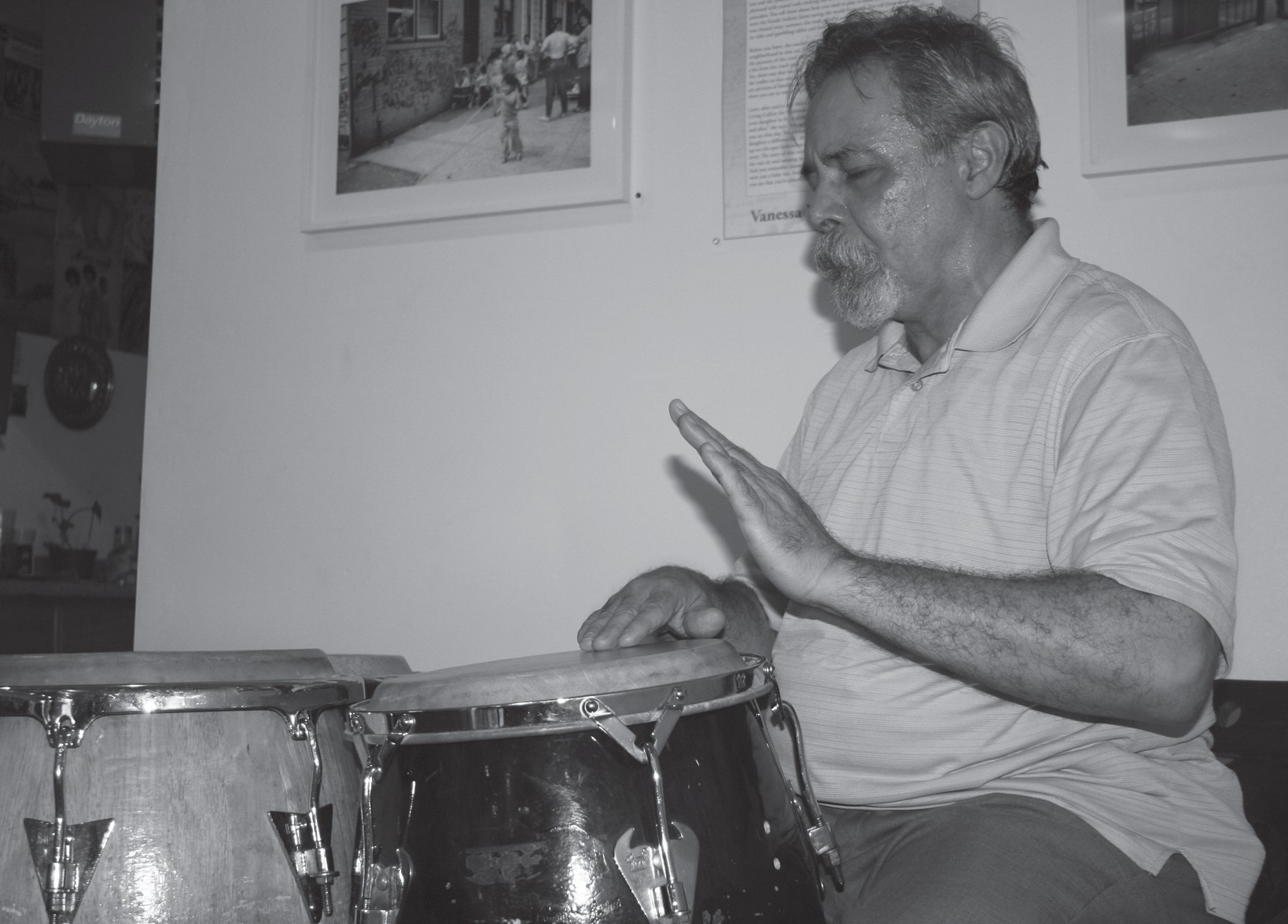
Ten writers, including Mártir, presented original work prompted by Meisler’s historical images. Special guest Ruth Garber, a 101- year-old who grew up in Bushwick, shared her experience living in the neighborhood as a Jewish immigrant in the beginning of the 20th century.
Through a short monologue read by her daughter Cecelia, Garber told of barns and stables, building snowmen with other children from the neighborhood’s primarily German families and learning about “African history 40 years before the civil rights movement” from famed historian and social activist Willis Huggins, who taught Garber history at Bushwick High School.
The other writers shared memories of a different Bushwick-a post-’70s wasteland where beauty still bloomed if you looked for it in the right places.

“I want to tell you about the Bushwick of the ‘before’ and of the ‘in between’ / The picnics we had in the junkyard leaning on rusted cars and eating pastelitos and alcapurrias fried before the sun came up / I want to tell you about the block partieshellip;,” began a poem titled “The Love We Made” performed by Mártir.
When she reached the line “We stole electricity from the light posts to blast boom boxes so the boys could lay out cardboard boxes to do their head spins and windmills,” she paused.
“Am I bringing you back?” she asked the audience.

Hoots, nods and fingers snapping in affirmation issued from many in the crowd, which was mainly a mix of white, twentysomethings and Latinos of all ages. A blind person could have picked out which attendees were really “from” Brooklyn based on their reactions to finer details like Mártir’s, which peppered each performance.
References to Latin food, verses that vacillated between English and Spanish, and memories from an era inaccessible to many at the reading served to differentiate the crowd without alienating anyone.
Mártir, who read several pieces during the event, later remarked that conversations about gentrification should be “confrontational but not hostile.”
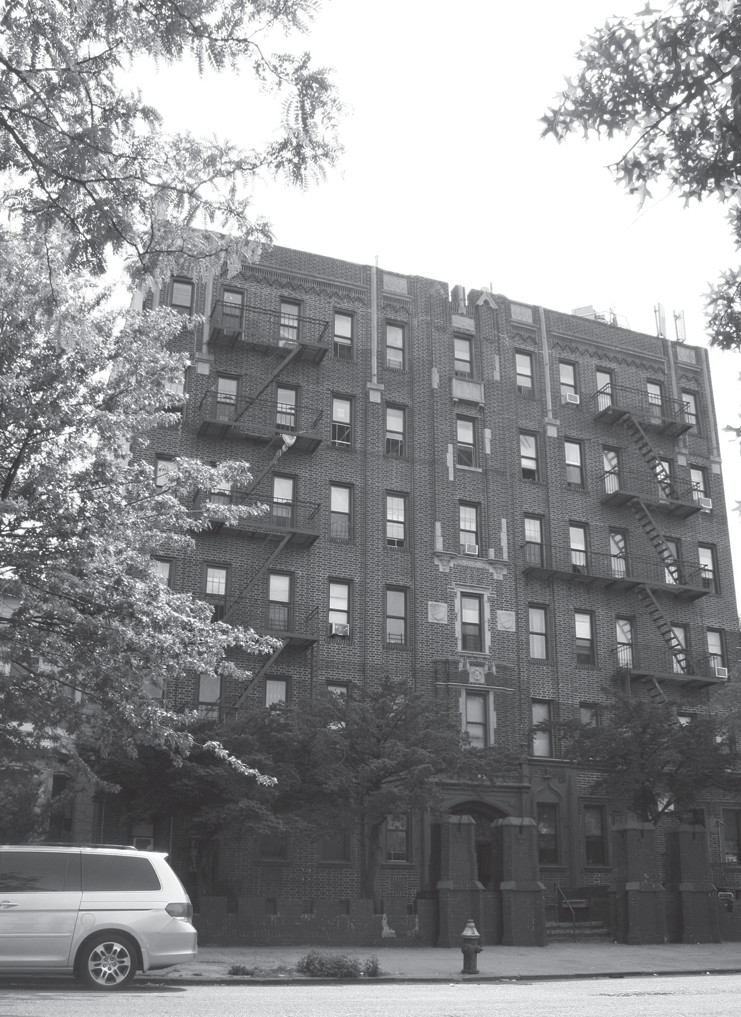
By way of the artists’ performances, Bushwick’s newer residents (this reporter included) were confronted with the very real disconnection between neighborhood’s rich history and their own lives.
Prompted by a photo of a boy playing in a cardboard refrigerator box set against the backdrop of a rubble-filled lot, poet and community leader Papo Swiggity recalled his own childhood in Bushwick and the threat of losing his home in an untitled poem that began: “An eviction notice flapped over our shattered peephole in the winter of ’82.”
And later in the poem: “I wasn’t old enough to understand the reasons / but I understood the weight.”
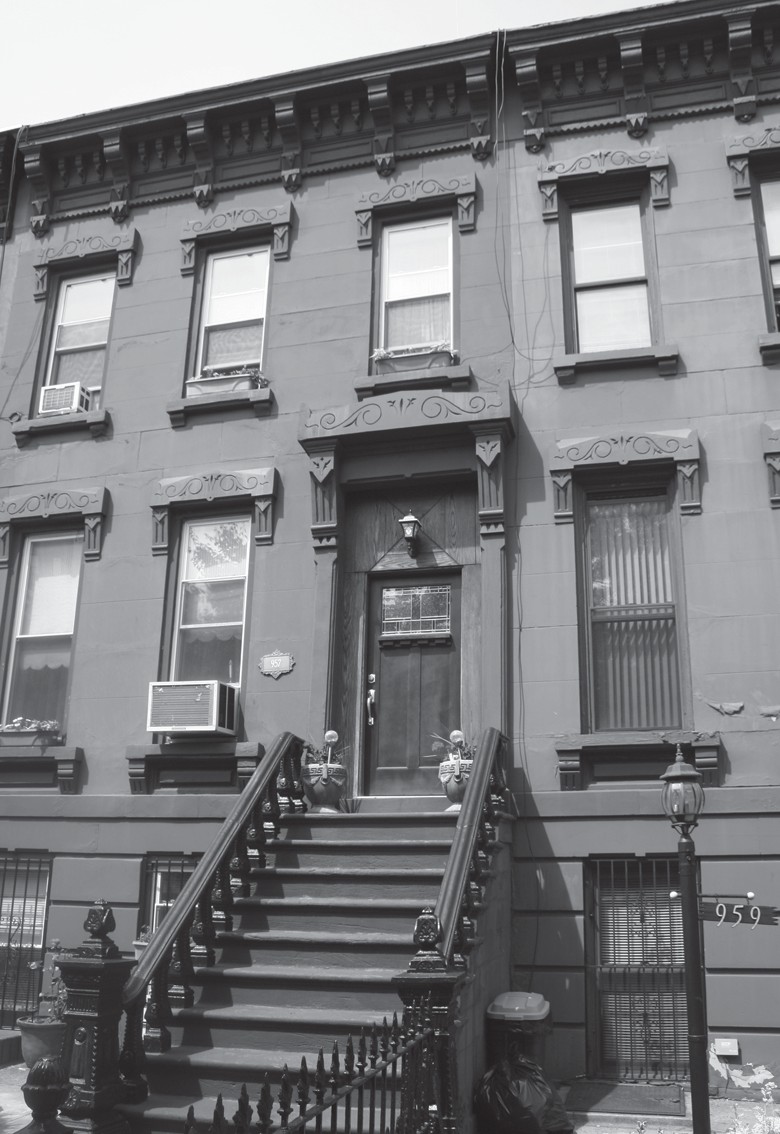
The performance, invoking the halted rhythms of an Afro-beat poet, told of Swiggity’s own cardboard box, where he went to escape fears of homelessness and losing his mother.
Perhaps channeling Virginia Woolf, he dubbed it “a home of my own,” ending the poem with: “Landlords don’t know this address / cops don’t know this beat / telephones don’t ring / and if I close my eyes I can hear my mama sing / Let me believe that in these corners / play Freedom.”
Taina Delamar, who also read at the showcase, shared her experience growing up in the neighboring community of East New York, describing youth as “untamed and wild, but not free.” She raised questions of social justice amid themes of a curtailed childhood, lamenting, “No child should have to know the difference between a dope fiend and a base-head.”

Still, there were positive notes in every piece-notes that were perhaps best intoned by Tamara Saliva, who proclaimed, “We smiled among rubble.”
After the artist talks, renowned percussionist Angel Rodriguez Sr. played conga drums in a traditional Afro-Cuban style. He gave a rudimentary lesson on rhythm and taught the crowd several “claves”-the rhythmic patterns that serve as the backbone for many styles of Latin-American music.
During the lesson, he shared anecdotes about his life a professional musician.
“I wanted to be a comedian, but I never had the timing,” he joked.
Before the fire
Before it was raised up in what politicians have termed “the Bushwick Renaissance,” the neighborhood was razed in a series of fires, blackouts and looting events that consumed the it throughout the 1970s and ’80s (for more information, see the 1978 Ridgewood Times article reprinted on page 28).
The destruction claimed 20 percent of the neighborhood’s housing stock, half its businesses and precipitated a 33 percent decline in population.
But what was it like before, and how did it get that bad?
A walking tour lead by historians Adam Schwartz and John Dereszewski reached back into the 1800s to teach attendees the neighborhood’s history from its heyday to today.
Schwartz has taught in the neighborhood for more than a decade, and Dereszewski served as the district manager for Bushwick in the late 1970s.
The tour began in the backyard of The Living Gallery, where Dereszewski and Schwartz delineated their experience and gave a brief rundown on the challenges the neighborhood faces.
Schwartz said the Bushwick’s rich history is an “unfolding narrative.”
“There’s a story here that’s ready to fall off the vine,” he said .
Dereszewski talked about public policy concerns plaguing the neighborhood.
“The future for the poor in Bushwick is grim,” he said. “There is not enough low-income housing.”
Dereszewski said the housing collapse in the mid-2000s stemmed the tide of gentrification, but as the economy strengthens, the development machine is once again picking up steam.
After the introductions, the tour got underway. It began, appropriately, on Broadway-once an entertainment hub that rivaled Manhattan’s Broadway, according to the guides.
“You didn’t need to go to Manhattan,” said Schwartz.
Dereszewski noted the strip played home to several theaters that presented first-run Vaudeville acts during the turn of the 19th century.
Just off Broadway, on Lawton Street, Dereszewski pointed out new housing built in the last decade or so. He said the sixstory condominium-style building was “out of context” with the surrounding neighborhood.
According to Dereszewski, the developer was able to build bigger by skirting zoning limitations, but has since been denied any similar requests.
Contextual housing was a theme both Dereszewski and Schwartz touched upon multiple times.
Schwartz said Bushwick’s community board is investigating the possibility of “down-zoning” some portions of the neighborhood- putting stricter limitations on the height of buildings in order to preserve the neighborhood’s character.
The board will probably shoot to reduce some residential areas from R-6 to R-5, which would put stricter limits on building height and the size of the building’s footprint.
Continuing on, the guides pointed out a black and gold-colored building on the corner of Bushwick Avenue and Hart Street, which served as headquarters for the Bushwick Democratic Club until 1974, when it was destroyed in a fire.
–STORY CONTINUES ON PG. 27-
The remaining building became the headquarters for Ansaru Allah an afro-centric, pseudo- Muslim sect that incorporated Egyptian mythology.
Schwartz said the sect’s founder, Malik York, eventually left the city in disgrace, but the group’s legacy differs depending on who you talk to. Some residents will say Ansaru Allah strong-armed the neighborhood through intimidation, others contend it brought a sense of stability and opened up a dialogue about African-American issues, he said.
Nearby, a street’s names bridges the neighborhood’s distant past with a more recent one.
Kossuth Place, which is named for the leader of a failed Hungarian revolution in the 1840s, also bears the name Jose Sucuzhanay Place.
Sucuzhanay was an Ecuadorian immigrant who died as the victim of a hate crime on the corner of Bushwick Avenue and Kossuth Place in late 2008.
The tour stopped at the Reformed Church of Bushwick. Schwartz said that the city gets a lot of credit for rebuilding Bushwick after the destruction in the 1970s, but church groups affiliated with the Reformed Church were some of the first to rebuild after the blackouts ended.
Dereszewski noted that Himrod Street is named for church’s first pastor: John S. Himrod.
Schwartz lamented the building’s deteriorating condition.
“I’m waiting to pick up the paper after a storm and see that the steeple fell down,” he said.
Continuing east on Bushwick, the road started to open up as buildings were situated further back from the road. The sidewalks widened.
The sense of space remains from when, in the 1800s, Bushwick Avenue was referred to simply as “the boulevard,” Schwartz said. It was lined with elegant mansions and served as a major gathering-point for residents.
“This was a sidewalk culture,” Schwartz said as the tour group passed a family barbecuing on their stoop and a woman selling Puerto Rican flags and bandanas from a folding table. In many ways, it still is a sidewalk culture.
At Bushwick Avenue and Bleecker Street, the tour passed an imposing red brick building that stood, six stories tall, where Bleecker dead-ends into Bushwick. Built in the ’20s, it was one of the last buildings built in the neighborhood before a 60-year construction hiatus, according to Schwartz.
“Imagine standing on Bleecker in the ’20s and seeing this towering at the end of the street,” Schwartz said.
The tour passed 959 Bushwick Ave., where former New York Mayor John Hylan lived in 1925-he was one of two mayors to live in Bushwick, according to Derezsewski.
In her monologue for “Defying Devastation: Bushwick Then and Now,” Ruth Garber-the 101-year-old who grew up in Bushwick-recalled waving hello to the then-mayor when she was young.
Heading north on Menahan Street, toward Central Avenue, Dereszewski and Schwartz explained a little about the fires that ravaged the neighborhood and the subsequent rebuilding process.
There was little insulating the tract housing that lines Bushwick’s streets, so when fires started, they spread rapidly to neighboring buildings-updated fire and building codes look to prevent the problem in the future, he said.
When the city began to rebuild, it needed affordable housing that could be erected quickly, he said. Hence, blocks throughout the neighborhood are speckled with “infill housing”-twofamily, attached brick homes built as part of the NYC Depart,emnt of Housing Preservation and Development’s Partnership New Homes Program.
You can tell exactly how a block fared during the fires based on how many “infill houses” there are, Schwartz noted.
He and Dereszewski agreed that, while the houses don’t look like the surrounding architecture, they were a successful stopgap that helped revitalize a neighborhood that seriously needed the housing.
On Central Avenue between Bleecker and Menahan Streets, Dereszewski stopped to tell the group about St. Barbara’s Church-the iconic Roman catholic church built in 1910. Dereszewski said the church was actually named for brewer and major church donor Leonard Eppig’s daughter, Barbara.
For a time, the church stood as a “symbol of the 1920s splendor in the middle of absolute blight,’ he said.
The church stands a block from Bushwick’s Hope Gardens Houses-the public housing project completed in 1981. Both guides called the houses a triumph of public housing that provided affordable living spaces and served to fill in many rubblefilled lots left smouldering after a decade of fires.
They said the construction of affordable housing, particularly for the elderly, has served to raise up the community after periods of destruction.
The two took some time to explain the how the neighborhood’s demographics have changed over the decades.
What was initially a Polish settlement became heavily German in the mid 1800s. Mush of the German middle class left deutschland for New York, and many settled in northern Brooklyn and central Queens, Dereszewski said.
After World War I, the German population declined and was replaced by Italians, but the neighborhood lost much of its population after World War II, when many returning soldiers moved further into the suburbs and Long Island, Schwartz said,
The populations declined severly before black and Puerto Rican families began moving to the area in the 1960s to buy inexpensive homes or take advantage of Section 8 housing, Schwartz said.
The surging population, absentee landlords and fewer city services amid a budget crunch created a volatile mix that led up to the fires and blackout, he said.
As the tour pressed on, Derezsewski and Schwartz broached a topic that was probably at the forefront of a few minds that sweltering June day: Bushwick’s breweries.
Derezsewski said the neighborhood was a brewing mecca before the prohibition forced many brewers to close their doors.
The “mom-and-pop” operations brewed beer by the keg that was distributed to local watering holes. Many facilities simply sold their yield out of an attached pub-they didn’t distribute it, Schwartz said.
He conjectured the lack of canning and bottling may have killed Bushwick’s remaining beer industry once heavyweights like Coors and Budweiser began distributing nation-wide.
The tour took its last turn from Bushwick Avenue onto Linden Street toward Broadway.
“This would be the center of my Historical District,” Schwartz said, referring to the tree-lined streets and beautifully maintained brick row houses.




